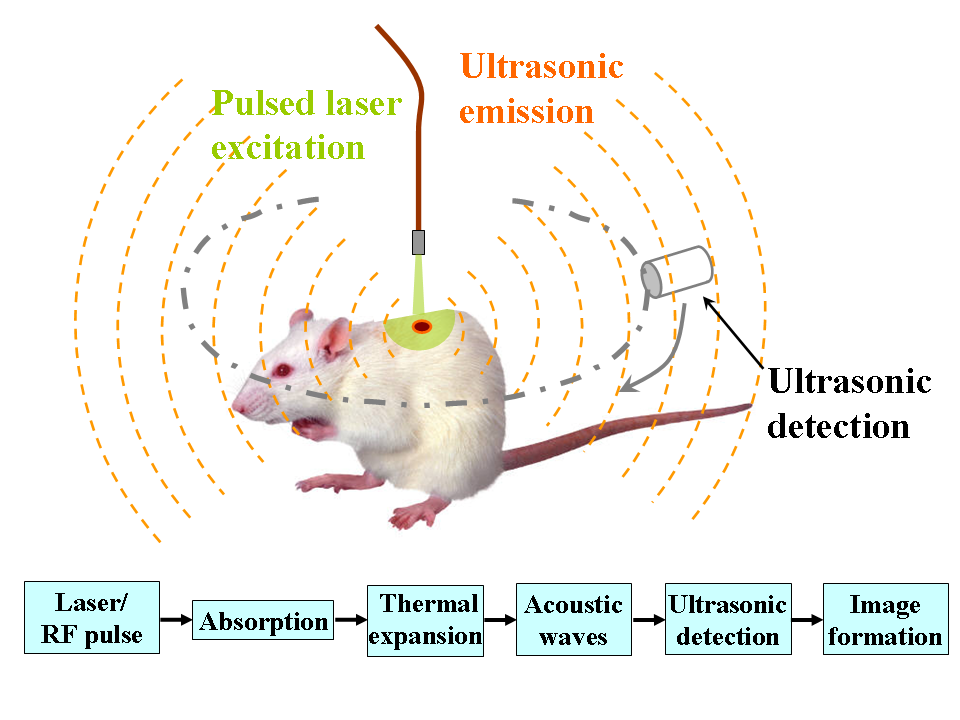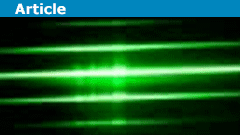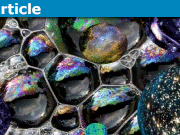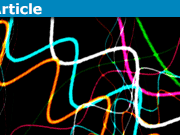The Interaction of Sound and Light
I recently wrote a post on my blog about a fairly esoteric idea regarding sound propagating through light. This inspired me to write an article about the more down-to-earth interactions between light and sound. Light is a transverse electromagnetic wave and sound is a longitudinal density wave through a medium, and it’s generally taught that they are Two Different Things. However, there are a few effects that involve their interaction. I will discuss three effects with similar-sounding names: the photoacoustic effect, the acousto-optic effect, and sonoluminescence, as well as the general quantum treatment of sound-light interactions.
Table of Contents
Sound and Light Key Points
- Light and sound are two different things, but there are a few effects that involve their interaction
- Three effects were discussed: the photoacoustic effect, the acousto–optic effect, and sonoluminescence
- The photoacoustic effect involves a sound emission that originates from a change in density induced by light
- The acousto-optic effect involves the scattering of light due to a change in the index of refraction of a material caused by a sound wave
- Sonoluminescence involves a collapsing bubble emitting a flash of light
- Photon–phonon interactions occur on the quantum level in crystals, contributing to the overall refractive index of a material
The Photoacoustic Effect
The photoacoustic effect, from the Greek word for light and the Greek for hearing, is a sound emission that originates from a change in density induced by light. A typical example involves a block of stuff that you blast with a laser. The laser blast causes the stuff to rapidly heat up and expand, and that expansion causes sound waves to propagate through the medium surrounding the stuff. Other mechanisms don’t involve thermal expansion, but this one is the most ubiquitous. The photoacoustic effect was discovered by Alexander Graham Bell, who was experimenting with ways to transmit sound over long distances (the telephone of course being his most famous invention).

Photoacoustic imaging. Image from Wikipedia.
One of the applications of this effect is photoacoustic imaging, a biomedical imaging technique that involves blasting tissue with a laser and then detecting the sound waves with a piezoelectric ultrasound transducer. It can be advantageous over pure ultrasound imaging because the laser pulse overcomes limitations involving the propagation of sound through tissue (although now you have issues involving light propagation). One of the reasons this might be useful is because tumors tend to have different elastic and thermal properties compared to regular tissue (cancer cells are generally squishier, for instance), so both the absorption of the light and the propagation of the sound would help pinpoint the presence of a tumor. Looking through the recent literature on the topic, it appears that photoacoustics are rarely used by themselves, but in tandem with other modalities such as MRI or fluorescence imaging, to get an overall better picture of what’s happening inside the body.
The Acousto-Optic Effect

Light diffracts off the sound.
The acousto-optic effect, combining the Greek roots for hearing and seeing, is the scattering of light due to a change in the index of refraction of a material that arises as a sound wave passes through and changes the density. Because the change in density from the sound wave is periodic, the light essentially experiences a diffraction grating, with bands of light going off at different angles from the region of the density wave. This was predicted by Brillouin in the 1920s and observed experimentally by Debye and others in the 1930s.

Acousto-optic modulation, from Wikipedia.
There is a technology called an acousto-optic tunable filter (AOTF), also known as an acousto-optic modulator. It involves a transducer and an acoustic absorber on opposite sides of a quartz lens, creating a standing wave within the lens, that can be modulated by changing the waveform coming from the transducer. As light passes through the lens (let’s say as part of a microscope), the user can dynamically move the focus by tuning the standing wave in the glass or even have multiple foci. When the lens is used for optical tweezers (trapping an object at a laser’s focus with electromagnetic forces), an AOTF can be used to move the focus, and therefore the trapped object. Below is a video of some Finns using this to control four beads and have them dance around at will.
Sonoluminescence

The light at the end of the bubble.
Sonoluminescence, from the Latin for sound and light, is a phenomenon that involves a collapsing bubble emitting a flash of light. I used to be a bubble scientist so this is one of my favorite effects; I have written about it before on PhysicsForums and on my blog. Sound waves, when applied to a bubbly fluid, cause the bubbles to expand and contract due to the changes in the gas pressure inside the bubbles. If the bubbles contract by an extreme amount (due to either the applied sound field or just because they’re unstably large), almost down to a point, a powerful shock wave and a flash of light are released. This was discovered by accident in 1934 when two German scientists were attempting to use ultrasound to make photographs develop faster. They noticed random spots of light appearing on their photographs, and eventually, it was concluded that the light arose from the collapsing bubbles. I have written quite a bit about this in my other article, so I won’t add much more, but I will just mention that this is considered a sound-light interaction because the light is created after the application of sound waves to the fluid.
Photon-Phonon Interactions
Solid-state physics was never my strong suit, but I will briefly mention some sound-light interactions that occur on the quantum level in crystals. Electromagnetic waves can be treated in terms of discrete photons, and likewise, acoustic waves can be treated as phonons, which are discrete vibrations of a crystal lattice. Both of these have their ways of propagating through a crystal, and they can interact and scatter off one another. Many of the effects that occur are quantum versions of some of the aforementioned, including Brillouin scattering, which involves a photon being scattered as it interacts with a phonon. Processes like Raman scattering involve a photon exciting an atom in a material, which reduces its exciting energy by emitting phonons so that when it relaxes back to its ground state, the emitted photon is of lower energy. These interactions contribute to the overall refractive index of a material, which ZapperZ comments on here.
Conclusion
I don’t expect the information in this article to blow anyone’s mind, but these are interesting and occasionally effects, and those interested in physics, in general, may be keen to learn more about sound-light interaction.
Ph.D. McGill University, 2015
My research is at the interface of biological physics and soft condensed matter. I am interested in using tools provided from biology to answer questions about the physics of soft materials. In the past I have investigated how DNA partitions itself into small spaces and how knots in DNA molecules move and untie. Moving forward, I will be investigating the physics of non-covalent chemical bonds using “DNA chainmail” and exploring non-equilibrium thermodynamics and fluid mechanics using protein gels.




[CODE]
A photon out cruising at night,
saw a phonon just off to his right.
Said the P to the P,
is it better to be,
a sound instead of a light.
[/CODE]
That was a fun insight. Thanks for sharing your knowledge.
Is it true that the physics of sonoluminescence is not fully understood yet?
A minor point: in acousto-optic modulators/scanners/deflectors, TeO2 is more commonly used rather than quartz. Some good references for this (highly complex) subject are Korpel “Acousto-Optics” , Goutzoulis “Design and Fabrication of Acousto-Optic Devices” and a fine chapter in Saleh and Teich “Fundamentals of Photonics”.
Nice Insight Alex!
Very interesting! I had no idea about most of those interactions between light and sound!
A minor point: in acousto-optic modulators/scanners/deflectors, TeO2 is more commonly used rather than quartz. Some good references for this (highly complex) subject are Korpel "Acousto-Optics" , Goutzoulis "Design and Fabrication of Acousto-Optic Devices" and a fine chapter in Saleh and Teich "Fundamentals of Photonics".
Nice Insight Alex!